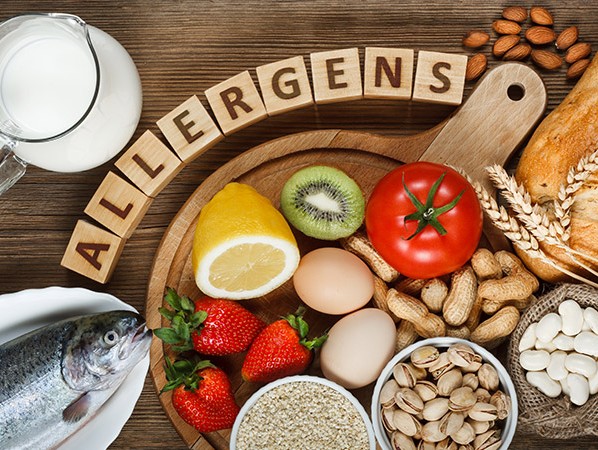
Food safety goes hand in hand with proper labelling on packaging. But it happens almost every week: there are many recalls of products due to the (possible) presence of non-declared allergens. What goes wrong?
The European Union has determined that ingredients that cause the most hypersensitivity reactions - 14 allergens - must be indicated extra clearly on the label (Regulation 1169/21011 and Annex II). This may be done via a distinctive font, style of background colour. The purpose: to ensure the food safety and right of consumers to information, and protect the health of consumers (including those with a food intolerance or allergy).
The number of safety warnings and allergen recalls published on the website of the NVWA is as high as ever. A few recent examples include: Plus recalls smoked chicken salad with one Beter Leven star due to the presence of milk, celery and mustard. Jumbo warns of allergen in Indonesian Rice Table. Or IKEA recalls SÖTSAK SKUMTOPP foam balls because the milk allergen is not explicitly stated on the ingredient list. The producer is required to warn consumer when things go wrong. The NVWA publishes these warnings on its website.
In the past, the NVWA would apply zero tolerance: when finding allergenic substances in a food product that had not been labelled, the NVWA would consider it an ‘unsafe product for consumers with a food allergy or intolerance’. After the advice of the Risk Assessment & Research Programming Office (BuRo) of 3 June 2016, the NVWA has adjusted its enforcement policy. When assessing whether a product is unsafe, the NVWA has since been working with the reference doses included in the advice. If the value is above the reference dose, the product is unsafe. If the value is below that value, the product is safe or ‘the risk is acceptable’. This outcome determines whether or not to proceed with a recall.
However, the reference doses applied are not legal limits. For allergens for which no reference dose is included in this advice, the NVWA basically still applies zero tolerance. The NVWA can impose an administrative fine. Depending on the severity of the violation and the number of employees on the day of the violation, the fine amount is generally between € 525 and € 1,050. But the authority can also impose a higher, revenue-related fine.

Noteworthy is a preliminary injunction between two producers of snack foods (popcorn, nachos and dip sauces). Both parties sell these products to, among others, retail and the business market, such as cinemas. Part of the preliminary injunction was the claim that the defendant producer may not bring its products onto the market without the information regarding substances that cause allergies or intolerances. After the summons was issued, the defendant producer changed the recipe and labelling. However, the preliminary injunction continued, because the defendant producer refused to sign a declaration of abstinence (basically: ‘I was wrong and I won’t do it again’). The Rotterdam preliminary injunction court dismissed the claims. It was ruled that information about allergens was provided in accordance to the European Food Information Regulation. For instance, the defendant producer used a flyer with extensive food information, including information about allergenic substances. These flyers were given to the business market in order to be provided to consumers.
The label of the packaging can also be the subject of discussion with the Advertising Code Committee, the body that checks whether (advertising) expressions are incorrect and/or misleading for consumers. Illustrative is a statement surrounding the expression of a producer in which it was stated that the tomato soup is (100%) allergen-free. According to the complainant, this is misleading, because the soup contains various herbs, including garlic and pepper, and it is known that 2% of the population are allergic to these. The advertiser defended themselves by indicating that the products mentioned in the expression did not contain allergens that are required to be declared under the European Food Information Regulation (namely the fourteen legal allergens). The Advertising Code Committee ruled in favour of the complainant: the fact that the products do not contain allergens that are required to be declared, does not rule out that there can still be other allergens that are not included on the legal list. Therefore, the expression of ‘(100%) allergen-free’ is misleading.
The cause of allergen recalls seems to often be found in lacking internal communication: the Planning Department switches around a production run and does not inform the production staff, resulting in the wrong raw material or semi-finished product ending up inside the product. Or producers receive the wrong label because someone in production is not paying attention. It may be obvious, but I’m going to say it anyway: avoid recalls and errors on the work floor: work according to strict protocols and ensure properly trained and motivated personnel.
Photo Allergens: ©Evan Lorne/Shutterstock.com
Source: © Vakblad Voedingsindustrie 2019